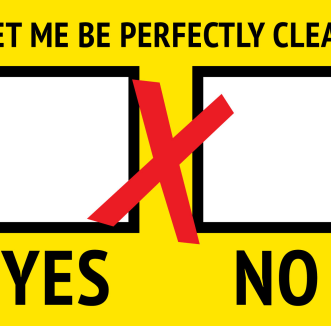
Trust your gut
The person in front of you is saying all the right things, but something feels wrong. Something jars. You don’t quite believe that they share your core values or your vision.
You have a feeling that you should say no to this prospect.
An initial consultation, sales meeting or discovery meeting is there to help both sides decide whether they really want to work together. It is perfectly OK for the prospective client to say no at this point. It’s also perfectly OK for you to say no too, especially early on in your business.
You don’t have to agree with the people you serve on everything, but a misalignment on core values spells trouble. Both sides will end up dissatisfied and resentful.
That means that the time and positive energy you gain to spend on your business by saying no to the wrong kind of client far outweighs the money they may pay.
Trust your gut and say no.








